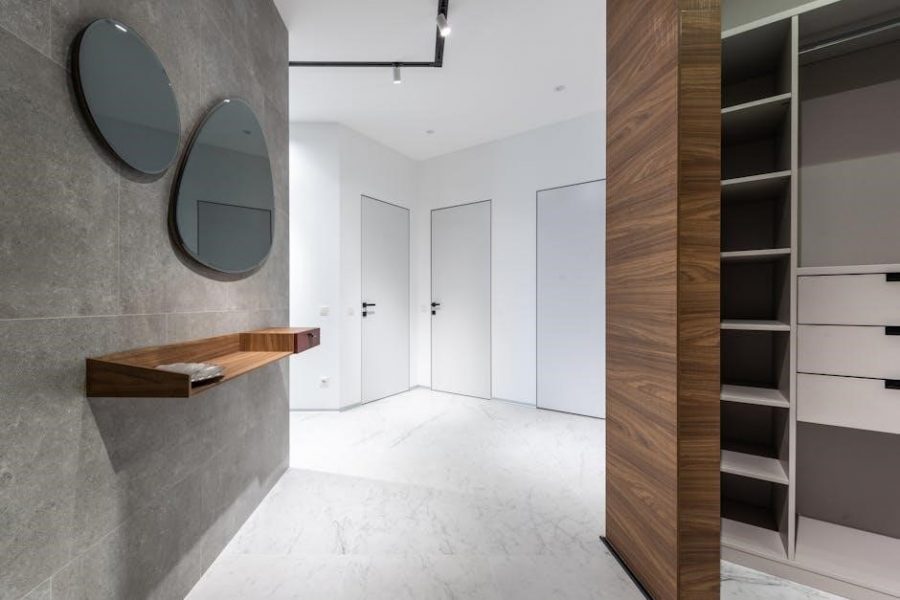Installing a sliding closet door floor guide on carpet requires careful preparation and the right tools. It ensures smooth door operation and prevents carpet damage. Measure, cut, and secure the guide properly for stability.
Overview of the Importance of a Floor Guide
A floor guide is essential for smooth operation of sliding closet doors on carpet, ensuring proper alignment and preventing the door from getting stuck. It helps maintain even movement, preventing damage to both the door and carpet. By securing the guide firmly, often to the subfloor, it handles the door’s weight and motion effectively. This installation also reduces noise and protects the carpet from wear and tear, enhancing safety and functionality in spaces like bedrooms or home offices.
Tools and Materials Needed for Installation
Installing a sliding closet door floor guide on carpet requires specific tools and materials for a successful and durable setup. Essential tools include a drill, screwdriver, measuring tape, pencil, and a utility knife for cutting carpet. A level ensures proper alignment, while a hammer may be needed for tapping fasteners into place. Materials include the floor guide itself, screws for securing it, and a plywood plate to provide a sturdy base under the carpet. Hammer-set fasteners or wood screws are ideal for attaching the plywood to the subfloor. Additionally, spacers or shims can be used to stabilize the guide on uneven surfaces. Having all these tools and materials ready ensures the installation process is efficient and avoids repeated trips to the hardware store. Proper preparation with the right equipment guarantees a professional-looking result and long-lasting functionality.

Preparing the Area for Installation
Clear the workspace by removing obstacles and vacuuming the carpet; Roll back the carpet where the guide will be installed for easy access.
Clearing the Workspace and Removing Obstacles
Before starting the installation, ensure the area around the closet door is completely clear of furniture, rugs, and other obstructions. Roll back the carpet where the guide will be placed to expose the floor surface. Vacuum or sweep the area to remove dirt and debris, ensuring a clean workspace. Remove any existing door tracks or hardware that could interfere with the new installation. Check for any unevenness or obstacles on the floor and address them beforehand. Flatten the carpet edges near the installation area to prevent wrinkles or bubbles. Use masking tape to temporarily secure the rolled-back carpet, keeping it out of the way while you work. A clean and obstacle-free workspace ensures accurate measurements and a smooth installation process for the floor guide.
Measuring and Marking the Floor for Accuracy
Accurate measurement is critical for a successful installation. Use a measuring tape to determine the exact location for the floor guide, ensuring it aligns with the sliding door track. Mark the center point on the floor with a pencil, double-checking to ensure it’s straight and properly positioned. If the door track has a specific alignment mark, transfer this measurement to the floor. For carpeted areas, carefully cut a small section of carpet at the mark to expose the floor beneath, allowing precise placement. Use a level or laser tool to confirm the mark is straight and even. Once satisfied, use a marker to clearly indicate the installation area. Proper measurement and marking ensure the floor guide is installed in the correct position, which is essential for smooth door operation and stability. Avoid rushing this step, as misalignment can lead to functionality issues later. Take your time to ensure accuracy for a professional-looking result.

Installing the Floor Guide
Install the floor guide by cutting the carpet, attaching a plywood plate, and securing it firmly to ensure stability and proper door alignment. This step is crucial for smooth operation and durability.

Cutting the Carpet and Attaching a Plywood Plate
Carefully cut the carpet along the marked path using a utility knife or carpet cutter. Remove the cut section and attach a plywood plate to the floor using screws or hammer-set fasteners for a sturdy base. This step ensures the floor guide remains stable and securely fastened, preventing movement or damage to the carpet. The plywood plate acts as a solid foundation, especially on soft or uneven surfaces, and helps distribute the weight evenly. Ensure the plate is flush with the floor to maintain a seamless appearance. Proper alignment is crucial at this stage to guarantee the sliding door operates smoothly without obstruction. Once the plate is securely attached, the floor guide can be mounted on top of it, providing a durable and long-lasting solution for your sliding closet door system. This method is highly effective for carpeted floors, offering both stability and aesthetic appeal.
Securing the Floor Guide to the Plate
Once the plywood plate is in place, align the floor guide precisely over it. Use screws to secure the guide to the plate, ensuring it is tightly fastened. Double-check the alignment with a level to guarantee straight installation. Tighten the screws firmly to prevent any movement or shifting. For added stability, consider using washers or locking nuts to reinforce the connection. After securing, test the sliding door to ensure it glides smoothly without catching or dragging. Properly securing the floor guide to the plate is essential for maintaining the door’s functionality and longevity. This step ensures the guide remains firmly anchored, even with frequent use. By following these steps, you can achieve a professional-looking installation that enhances the performance of your sliding closet door system. The secure attachment of the floor guide to the plywood plate is a critical final step in the installation process.
Ensuring Proper Alignment and Stability
Use spacers or shims to stabilize the floor guide on carpet, ensuring proper alignment. Trim excess fibers for a neat finish and check alignment to ensure smooth door operation and durability over time.
Using Spacers or Shims for Stability on Carpet
Using spacers or shims is crucial for maintaining stability on carpet. These components prevent the floor guide from sinking into the carpet pile, ensuring the sliding door moves smoothly. Proper installation requires cutting the carpet around the guide area and attaching a plywood plate to the floor. This plate provides a solid base for the spacers, which are then secured firmly. The spacers or shims are typically made of durable materials like plastic or metal, ensuring long-lasting support. Once in place, the floor guide is attached to the plate, and any excess carpet is trimmed neatly around it. This step not only enhances stability but also ensures the door aligns correctly, preventing any wobbling or uneven movement. By incorporating spacers or shims, you achieve a professional-looking installation that withstands regular use.
Trimming Excess Carpet for a Neat Finish

Trimming excess carpet is essential for achieving a clean and professional-looking installation. After securing the floor guide, use a utility knife or carpet scissors to carefully cut the carpet around the guide, ensuring a precise fit. Tuck the trimmed edges neatly around the guide, pressing them firmly into place. This step prevents the carpet from bunching up or interfering with the door’s movement. For a polished appearance, ensure all cuts are even and the carpet lies flat. Trimming excess carpet not only improves functionality but also enhances the overall aesthetic of the installation. By taking the time to trim carefully, you ensure a smooth operation of the sliding door and maintain the integrity of your carpet. This final step completes the installation process, leaving a neat and professional finish.
